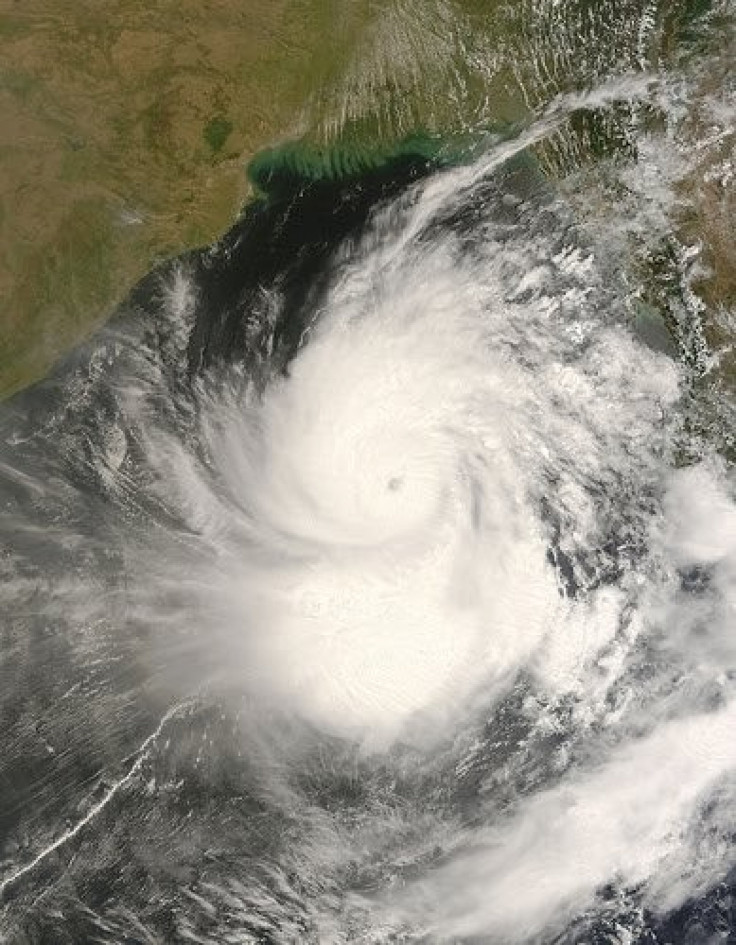Philippine Typhoon Haiyan Not ‘Worst Storm Ever’; Bangladesh Cyclone Killed Half Million People In 1970

Super-typhoon Haiyan has carved a path of unimaginable destruction over the central Philippines, with local officials estimating that up to 10,000 people have perished and hundreds of thousands of others have become homeless. The city of Tacloban has virtually disappeared off the map, as unburied corpses lay unclaimed on the streets. Even worse, rescue efforts by the Manila government and foreign aid and humanitarian agencies have been thwarted by badly damaged infrastructure, making access to needy people impossible in many areas.
"There's an awful lot of casualties, a lot of people dead all over the place, a lot of destruction," Richard Gordon, chief of the Philippine Red Cross, told BBC. "It's absolute bedlam right now, but hopefully it will turn out better as more and more supplies get into the area." For the moment, the principal concern is to dispatch food, clean water and shelter to up to 9 million people believed to be affected by the natural disaster in one way or another.
As terrible as the Haiyan typhoon has been for the Philippines, it is nowhere close to being the “worst storm ever,” as some media outlets have alleged. Current stories on Haiyan are describing it as the strongest tropical cyclone to make landfall in recorded history based on its extraordinary wind strength of 195 mph. However, in terms of loss of life, a cyclone that occurred 2,000 miles west of the Philippines some 40 years ago was far worse.
In November 1970, the Bhola Cyclone smashed into East Pakistan (now Bangladesh) and West Bengal (India) and killed at least 500,000 people -- although the true death toll will never be known. That is at least 50 times the number of deaths recorded in the Philippines over the weekend.
Although Bhola reached the equivalent of only a Category 3 Hurricane, the cyclone flooded onto densely populated, low-lying plains of the Ganges Delta and wiped out hundreds of villages overnight. At one point reaching winds of 115 mph, the cyclone destroyed almost half the population of the coastal area of Tazumuddin, Upazila (in present-day Bangladesh). Bhola is widely regarded as the deadliest tropical cyclone in recorded history.
The cyclone also played a part in leading to the independence of East Pakistan from its rulers in West Pakistan. The government of General Yahya Khan (based in Islamabad in the western part of what was then Pakistan) was widely assailed for its slow response at relief efforts by both the opposition Awami League in Dacca and by foreign leaders. The unrest in East Pakistan eventually led to a war of independence the following year and the creation of the new country of Bangladesh. The humanitarian crisis that emerged as a result of the cyclone (combined with the deadly civil war the following year) also inspired ex-Beatle George Harrison to organize the famous Concert for Bangladesh in New York City in August 1971.
Cyclones are familiar to the people of Bangladesh and India, accepted as a normal part of life. On average, the Bay of Bengal hosts five cyclones every year. Indeed, one-fifth of Bangladesh is submerged annually by flooding. According to HurricaneScience.org, the Bhola cyclone destroyed 65 percent of the coastal fishing industry, with 46,000 of the estimated 77,000 fishermen in the Tazumuddin area dying in the storm. In 1970 -- with no Internet, nor even television or radio for much of the impoverished population of East Pakistan -- there was no way to warn the people vulnerable to the storm's merciless wrath.
The death toll in East Pakistan in 1970 was far worse than what we're seeing in the Philippines, for a number of reasons: East Pakistan (or Bangladesh) was far more densely populated than the provinces of central Philippines hit by Haiyan; and communications systems in the early 21st century (with TV, Internet, etc.) are far more advanced and more widely accesible than in 1970 Bangladesh (giving some people ample warning to evacuate the danger zones).
In fact, consider that more than 20 years after Bhola, in April 1991, another monster cyclone hit Bangladesh, this time, killing “only” 140,000 people, as warning systems and communications had vastly improved since the days of Bhola. But even that “more modest” casualty figure dwarfs the death toll of Haiyan.
© Copyright IBTimes 2024. All rights reserved.











